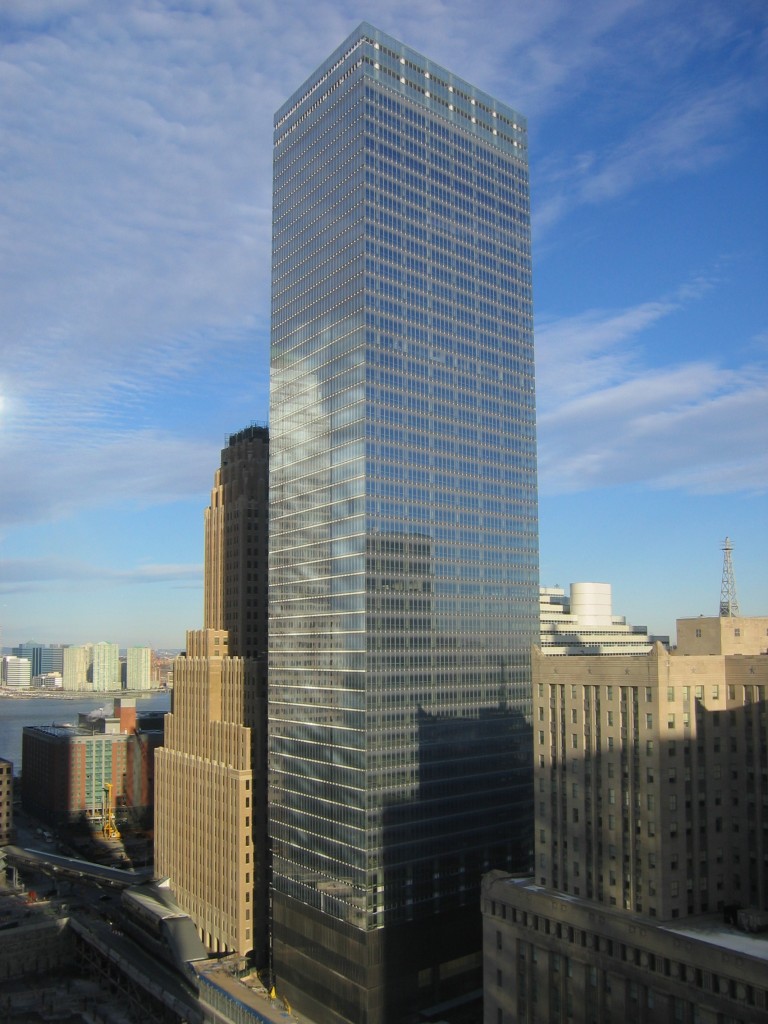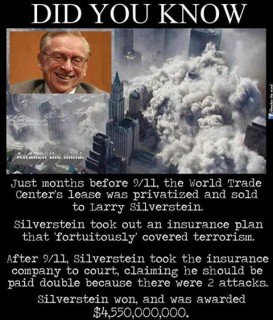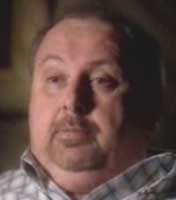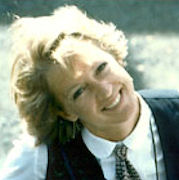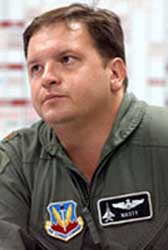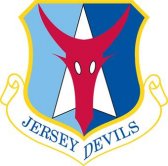Rick Wilder Anchorage Air Traffic Controller Was Ordered
To Tell Korean Air 085 to squawk 7500
To Tell Korean Air 085 to squawk 7500
https://911researcharchives.org/911/videos/Rick Wilder Anchorage Air Traffic Controller Was Ordered to1.mp4 Rick Wilder Anchorage Air Traffic Controller Was Ordered to tell Korean Air 085 to squawk 7500 which is the frequency to signal a Hijack. | shoestring911 - Sunday, 18 April 2010 Was Korean Airlines Flight 85 a Simulated Hijack in a 9/11 Training Exercise? Several hours after the 9/11 attacks in New York and Washington occurred, a passenger aircraft heading to the U.S. from Seoul, South Korea, was mistakenly considered hijacked. In a little-reported series of events, the pilots of Korean Airlines Flight 85 gave numerous indications that their plane had been taken over by hijackers, even though it had not. KAL 85, a Boeing 747 that had been due to land in Anchorage, Alaska, for a refueling stop, was consequently diverted to an airport in Canada. The military launched fighter jets to tail it and, with authorization from the Canadian prime minister, threatened to shoot the plane down if it refused to change course. Only after KAL 85 landed were officials able to confirm that no hijacking had taken place. While a person might suggest this crisis was just the result of confusion due to the unprecedented events earlier that day, the number of indications the pilots gave that their plane was hijacked, and their repeated failure to confirm that this was not the case, raises another possibility: Could KAL 85 have been playing the part of a hijacked aircraft in a military training exercise? |
This explanation would make sense of the pilots' otherwise inexplicable actions. And there is additional evidence supporting this possibility: On September 11, NORAD--the military organization responsible for defending North American airspace--was in the second week of a major exercise. Five days earlier, that exercise included two scenarios with remarkable similarities to the apparent crisis involving KAL 85. In one scenario, members of a fictitious terrorist group hijacked a Korean Airlines 747 bound from Seoul to Anchorage; in the other, a 747 bound from Japan to Anchorage was hijacked, and changed course for Canada. We know that the U.S. and Canadian military were in fact conducting several exercises on the morning of September 11. Those exercises were supposedly canceled promptly in response to the attacks. But if KAL 85 was a simulated hijacking, it would mean at least one exercise continued well into the afternoon, hours after the attacks took place. This would raise serious questions: When exactly did the military exercises really end that day? If they were called off promptly, as has been claimed, how many people were aware of this? Did some believe the exercises were continuing in spite of the real-world attacks? And was there a sinister but as-yet-uninvestigated relationship between the real-world attacks and the military exercises they coincided with? |
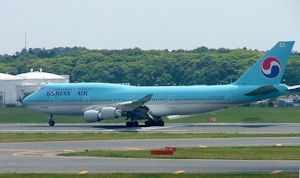 A Korean Airlines Boeing 747 | KOREAN AIRLINES FLIGHT 85 Korean Airlines Flight 85 was a Boeing 747 with 215 people on board, flying from Seoul to New York. It was heading for a refueling stop in Anchorage when it began behaving suspiciously. Beginning shortly after 11:00 a.m. (this and all other times given are Eastern time), its pilots gave repeated but inconclusive indications that their plane had been hijacked, even though no hijacking had taken place. The Federal Aviation Administration (FAA) was alerted to the suspect flight shortly before noon, and it in turn notified NORAD. [1] Concerns over whether KAL 85 had been hijacked led to the plane being diverted away from Anchorage. It was first redirected toward the remote airport at Yakutat, Alaska. But because of deteriorating weather around Yakutat and because the plane was running low on fuel, the decision was made to instead have KAL 85 land at Whitehorse Airport in Canada's Yukon Territory. [2] |
KAL 85 landed at Whitehorse Airport safely and without incident at 2:54 p.m. But only after the co-pilot was escorted off the plane and interrogated were officials able to determine that the flight had not been hijacked. [3] PILOTS INDICATED PLANE WAS HIJACKED The first indication of a possible hijacking was at 11:08 a.m., while KAL 85 was flying across the Pacific Ocean and hundreds of miles from mainland Alaska. The pilots sent a text message to Korean Airlines headquarters, which included the letters "HJK." These three letters were a known code for signaling a hijacking. The message did not immediately raise any concerns. However, ARINC--a company that airlines pay to transmit text messages to and from their planes--had begun scanning all the communications it transmitted that day to search for any additional hijacked aircraft, and one of its technicians came across the message, apparently shortly before noon. Concerned that it was a coded plea for help, ARINC officials notified the FAA of the message. KAL 85 showed its next indications of being hijacked after it entered the airspace of the FAA's Anchorage Center at around 1:00 p.m. An Anchorage Center air traffic controller, aware of the concerns about KAL 85, asked the pilots about the status of their aircraft. In his radio transmissions, the controller included the code word that indicated a query as to whether the plane had been hijacked, in case the pilots were unable to acknowledge this freely. (Pilots are trained how to respond to such coded messages.) However, the pilots of KAL 85 offered no reassurance that their flight had not been hijacked. Instead, at 1:24 p.m., they switched their plane's transponder (a device that sends information about an aircraft to controllers' radar screens) to "7500," which is the universal code meaning a plane has been hijacked. As USA Today put it, "Suddenly ... a routine flight became a potential new attacker." As KAL 85 continued toward Anchorage, controllers again sought clarification of its situation. But, as author Lynn Spencer described, "each time controllers query the aircraft, the pilots offer no reassurance that they are not, in fact, hijacked." Instead, KAL 85 transmitted the beacon code indicating it had been hijacked for 90 minutes, from 1:24 p.m. until 2:54 p.m., when it landed in Canada. [4] A report published by the government of Yukon in November 2001 in fact stated, "There were five separate and ongoing indicators of a hijacking situation" on KAL 85, although the report did not specify what each of those indicators was. [5] And yet KAL 85 was never hijacked. The FAA's Command Center in Herndon, Virginia, was in contact with Korean Airlines headquarters, which emphatically maintained it had received no indication that the flight was in trouble. [6] Might the "indicators of a hijacking situation" therefore have been because KAL 85 was playing a hijacked aircraft in a training exercise? POSSIBLE HIJACKING TAKEN SERIOUSLY The military and other government agencies took the indications of a possible hijacking very seriously. After the FAA was notified of the letters "HJK" appearing in a text message from KAL 85, it alerted NORAD. [7] NORAD then ordered Elmendorf Air Force Base, near Anchorage, to launch two armed fighter jets to intercept the suspicious plane. [8] These jets flew about a mile behind KAL 85, shadowing it so its crew and passengers would not realize there were fighters close by. Two Royal Canadian Air Force fighters were also launched in response to KAL 85. Fighters escorted the plane until it landed at Whitehorse Airport. They then remained circling overhead, in case the plane tried to depart suddenly. [9] Lieutenant General Norton Schwartz, the commander of the Alaskan NORAD Region, has recalled his concerns about KAL 85, saying: "[W]e just had three attacks on the East Coast and perhaps a fourth. It was completely plausible to me that so sophisticated an operation on the East Coast could be replicated on the West Coast. So this was a plausible threat." [10] KAL 85 was even threatened with being shot down. Schwartz told controllers at the FAA's Anchorage Center that the plane would be shot down if it refused to divert and remained on course for Anchorage. [11] A NORAD commander contacted Canadian Prime Minister Jean Chrétien and asked for authorization to shoot down the plane. As Chrétien later recalled, he "authorized it in principle," telling the commander: "Yes, if you think they are terrorists. You call me again, but be ready to shoot them down." [12] Other agencies also took the possible hijacking seriously. When KAL 85's pilots switched their plane's transponder to the "7500" hijack code, it led to what USA Today described as "a frenzy of activity." The governor of Alaska ordered the evacuation of federal buildings and large hotels in Anchorage, along with the Trans-Alaska Pipeline terminal. [13] After learning that KAL 85 was heading for Whitehorse Airport, the Royal Canadian Mounted Police (RCMP) removed children from local schools and evacuated buildings considered likely terrorist targets, such as Whitehorse City Hall. Part of the Alaska Highway was closed, a security perimeter was established around Whitehorse Airport, and non-essential staff members were evacuated from the airport terminal building. [14] KAL 85 continued being treated as a potential threat even after it landed at Whitehorse. After touching down, the plane was directed to a secluded area on the tarmac. It was surrounded by heavily armed RCMP emergency response officers. After an officer asked to speak with a member of the flight crew, the co-pilot emerged and was escorted off the plane at gunpoint. According to a local resident who saw the incident, the co-pilot had his hands up and "had everyone drawing down on him, and he had to take some clothes off, wave his shirt in the air and all that." [15] The passengers were not allowed off the plane until more than two hours after it landed. The following morning, the RCMP had a bomb-sniffing dog search the aircraft. The plane's cargo was also searched for any threats, but none were found. It wasn't until a couple of hours later, still early in the morning of September 12, that the RCMP finally confirmed that KAL 85 had never been hijacked. [16] CONFUSED EXPLANATIONS WHY PILOTS SIGNIFIED A HIJACKING One thing that is suspicious is the way Korean Airlines and the government agencies involved with these incidents were subsequently reluctant to explain why KAL 85 had given indications of being hijacked, or they gave conflicting explanations. Could this have been because these organizations needed to cover up the fact that--despite the attacks earlier on in New York and Washington--a hijacking simulation was still being carried out on the afternoon of 9/11, in which KAL 85 played the hijacked aircraft? Apparently the first explanation for the series of events involving KAL 85 was offered several hours after the plane landed at Whitehorse Airport. An airport spokeswoman announced simply, "There was a communications problem aboard the plane so [the pilots] were unable to communicate and respond properly to the [air traffic control] tower anywhere they went." [17] The Anchorage Daily News later reported: "At the time of this September 11 incident, little was publicly disclosed about the wayward signals from the Korean pilot. The airline and flight crew have kept mum about what happened that day." But, to explain why the pilots included the letters "HJK," signaling a hijacking, in a text message, Korean Airlines administrator Michael Lim suggested they had intended this as a question rather than a warning, but this was unclear to those who read the message, because pilots are unable to type question marks into their texts. [18] However, the airline's operations chief, David Greenberg, gave a different explanation. He said the pilots' text message was "innocent, part of a routine discussion on where to divert the flight after airspace in the United States had been closed." Greenberg said the pilots used the three-letter hijack code "to refer to the hijackings that day." [19] Author Lynn Spencer pointed out that this was "an odd idea for the pilots to have, and contrary to their training. But for whatever reason ... they made a very dangerous bad call." [20] The reason why the pilots switched their transponder to the code signaling a hijacking is, as the Anchorage Daily News put it, "not entirely clear." [21] Eleven months after 9/11, USA Today reported: "To this day, no one is certain why the pilots issued the alert. Airline sources say that exchanges between pilots and controllers were tense that morning. Some pilots objected to orders to reroute their planes. The Korean pilots may have misinterpreted the controller's comments as an order to reset the transponder." [22] The military reportedly blamed the false alert on "muddled communications between air traffic controllers and the flight crew aboard the plane." But Korean Airlines claimed that the pilot of KAL 85 "believed he was directed by air traffic controllers at the FAA's Anchorage flight control center to send out the hijack signal." The airline's administrator, Michael Lim, said: "Our captain was following their instruction. [The Anchorage Center] even told the captain to transmit code 7500, hijack code. Our captain, who realized how serious it is, they were just following instructions." Adding to the mystery, two weeks after 9/11 it was reported that Korean Airlines had "declined to make available a tape recording of conversations between the pilot [of KAL 85] and KAL officials on the ground in Anchorage," and that the "FAA won't discuss any details of the case." [23] There was even some uncertainty and secrecy over why Whitehorse Airport was chosen as KAL 85's new destination after it was diverted. The report published by the government of Yukon in November 2001 stated: "The question of why this potentially dangerous aircraft was directed to Whitehorse rather than another airport remains unanswered by senior national agencies, the [FAA], NORAD, and Transport Canada. ... [Q]uestions about the decision-making process to re-direct [KAL 85] to Whitehorse have not been answered in any significant detail." The report added, "It is expected that greater detail on this will not be forthcoming from these agencies in the short-term." [24] WAS KAL 85 PART OF AN EXERCISE SIMULATION? This secrecy and confusion would certainly make sense if these agencies were trying to cover-up KAL 85's involvement in a training exercise. What makes this possibility seem even more likely is that, five days before 9/11, NORAD practiced two exercise scenarios with an uncanny resemblance to the apparent crisis involving KAL 85. Those scenarios were part of its annual exercise, "Vigilant Guardian," which was still taking place on September 11. In one of the scenarios on September 6, 10 members of a fictitious terrorist group called "Lin Po" hijacked Korean Airlines Flight 357, a Boeing 747 flying from Seoul to Anchorage--in other words, a plane resembling KAL 85. The terrorists issued demands and threatened to blow up the plane if these were not met. They also killed two passengers. NORAD directed fighter jets to get in a position to shoot down the hijacked 747, and ordered its Alaskan region to intercept and shadow the plane--similar to what it did in response to KAL 85 on September 11. The scenario involved the plane eventually landing in Seattle, Washington. [25] In the other exercise scenario on September 6, a Boeing 747, also bound for Anchorage, was hijacked by terrorists, although in that case the plane had taken off from Tokyo, not Seoul. A fictitious terrorist group called "Mum Hykro" was threatening to "rain terror from the skies onto a major U.S. city unless the U.S. declares withdrawal from Asian conflict." Some of the plane's passengers were killed. The plane changed its course to Vancouver, Canada, and then to San Francisco, California. The military was directed to respond, by providing "covert shadowing" of the hijacked aircraft, presumably by fighter jets. NORAD had to liaise with the appropriate air traffic control center. Its Alaskan region and Canadian region participated in the scenario. Again, we see similarities to the events involving KAL 85 five days later. [26] Might the apparent hijacking of KAL 85 on 9/11 have therefore been a simulation intended as a follow-up to these two previous scenarios? Clearly, the actions of KAL 85 and the plane's possible involvement in a military exercise require more investigation. But the fact that exercises resembling the real-world attacks were taking place on September 11, and--if my conclusions about KAL 85 are correct--at least one of those exercises was still going on hours after the attacks in New York and Washington took place, should be of concern to us all. NOTES [1] Alan Levin, "Korean Air Jet May Have Narrowly Missed Disaster." USA Today, August 12, 2002; Patty Davis, "Korean Jet in 9/11 'Hijack' Scare." CNN, August 14, 2002; Lynn Spencer, Touching History: The Untold Story of the Drama That Unfolded in the Skies Over America on 9/11. New York: Free Press, 2008, pp. 256-257. [2] Alaska Legislature Joint Senate and House Armed Services Committee, Presentations by Lieutenant General Norton Schwartz and Major General Willie Nance Jr. 22nd Leg., 2nd Sess., February 5, 2002; Zaz Hollander, "High Alert." Anchorage Daily News, September 8, 2002. [3] Alan Levin, "Korean Air Jet May Have Narrowly Missed Disaster"; Zaz Hollander, "High Alert"; Lynn Spencer, Touching History, pp. 278-279. [4] Alan Levin, "Korean Air Jet May Have Narrowly Missed Disaster"; Patty Davis, "Korean Jet in 9/11 'Hijack' Scare"; Zaz Hollander, "High Alert"; Lynn Spencer, Touching History, pp. 257, 277-278. [5] September 11, 2001, Whitehorse International Airport Emergency: Public Findings Report. Whitehorse, Yukon: Yukon Government, November 13, 2001, p. 17. [6] Lynn Spencer, Touching History, p. 278. [7] Alan Levin, "Korean Air Jet May Have Narrowly Missed Disaster." [8] Zaz Hollander, "High Alert"; Lynn Spencer, Touching History, p. 257. [9] "Stranded Passengers Flood Canadian Airports." CBC News, September 12, 2001; Zaz Hollander, "False Sept. 11 Hijack Signal Put Air Force on Alert." Anchorage Daily News, September 29, 2001; Alaska Legislature Joint Senate and House Armed Services Committee, Presentations by Lieutenant General Norton Schwartz and Major General Willie Nance Jr.; Zaz Hollander, "High Alert." [10] Alaska Legislature Joint Senate and House Armed Services Committee, Presentations by Lieutenant General Norton Schwartz and Major General Willie Nance Jr. [11] Alan Levin, "Korean Air Jet May Have Narrowly Missed Disaster"; Lynn Spencer, Touching History, p. 278. [12] Shawn McCarthy, "PM Says U.S. Attitude Helped Fuel Sept. 11." Globe and Mail, September 12, 2002; Sheldon Alberts, "PM Links Attacks to 'Arrogant' West." National Post, September 12, 2002. [13] Alan Levin, "Korean Air Jet May Have Narrowly Missed Disaster"; Patty Davis, "Korean Jet in 9/11 'Hijack' Scare." [14] September 11, 2001, Whitehorse International Airport Emergency, pp. 14-15. [15] "Korean Passenger Jet Diverted to Whitehorse Treated as Hijacking: RCMP." Canadian Press, September 12, 2001; "Korean Planes Make Emergency Landings." United Press International, September 12, 2001; Zaz Hollander, "False Sept. 11 Hijack Signal Put Air Force on Alert." [16] September 11, 2001, Whitehorse International Airport Emergency, pp. 17-18. [17] "Korean Passenger Jet Diverted to Whitehorse Treated as Hijacking: RCMP." [18] Zaz Hollander, "High Alert." [19] Alan Levin, "Korean Air Jet May Have Narrowly Missed Disaster." [20] Lynn Spencer, Touching History, p. 279. [21] Zaz Hollander, "False Sept. 11 Hijack Signal Put Air Force on Alert." [22] Alan Levin, "Korean Air Jet May Have Narrowly Missed Disaster." [23] Zaz Hollander, "False Sept. 11 Hijack Signal Put Air Force on Alert." [24] September 11, 2001, Whitehorse International Airport Emergency, p. 5. [25] "NORAD Exercises: Hijack Summary." 9/11 Commission, n.d. [26] Ibid. |


